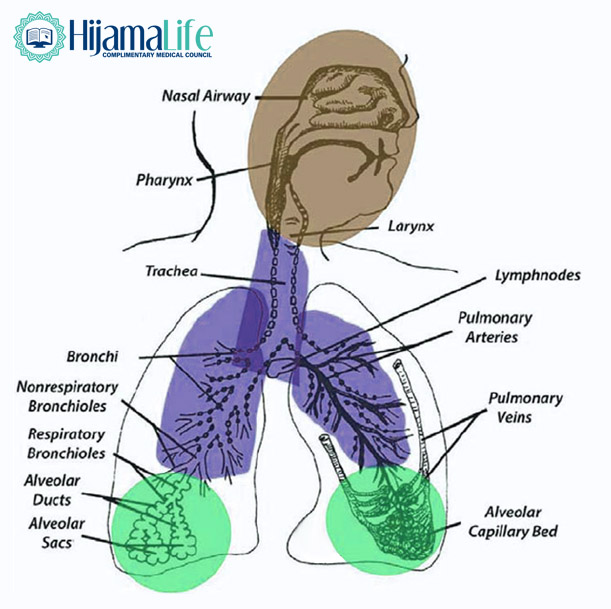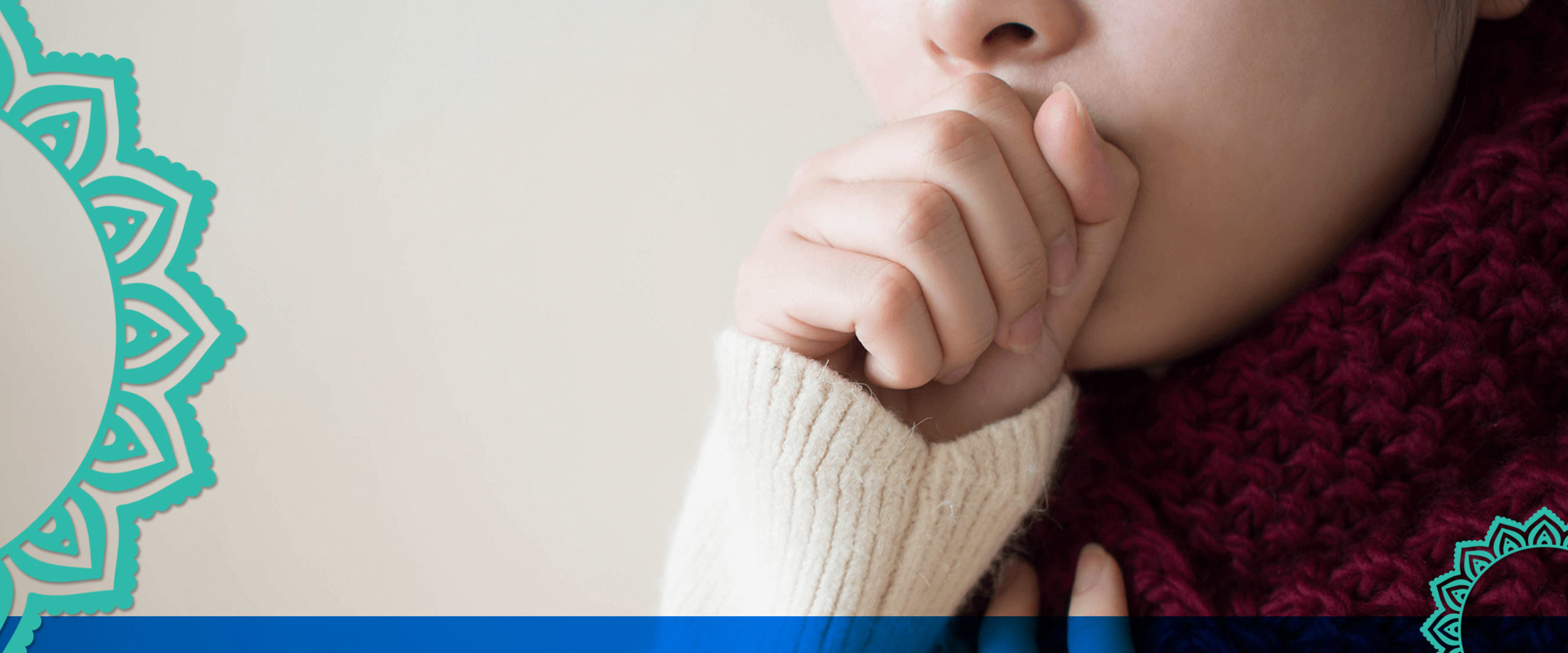Alternate and Natural Remedies For Bronchitis
In the last article we talked about hijama bronchitis treatment; the signs of the conditions with difficulties faced by Abdul and similar individuals who suffer from seasonal bouts of bronchitis.

Today I will share some useful tips and natural remedies to prevent the symptoms and conditions of bronchitis and other respiratory diseases. They are easily available, and many options can be included in the daily routine as well as a preventive medicine. These remedies have no side effects at all if taken in moderation and taken as a small daily dose. Hijama is also a treatment methodology for bronchitis that can be applied.
REMEDIES:
1. REST: believe it or not, proper rest to the body heals better and fights infections when your body gets a break. So, go get the SLEEP you were longing for!
2. SPICY FOOD: There is again a discussion; should one eat spicy or avoid spicy food. Spices like red chillies etc can be avoided. Also, spicy food should be avoided so as the throat does not get irritated. In turn this avoids stimulating unnecessary cough. Some believe having spicy food releases mucous as relieve the chest heaviness. In such cases, wasabi, horseradish, black and white pepper can be added in food in limited or less quantity.
3. CHICKEN SOUP: A bowl of hot chicken soup with some ground pepper and ginger, garlic made from scratch gives the strength needed as well as serves as a comfort food when one is unwell and tired with bronchitis.
Vegan and vegetarian individuals can opt for vegetable soup or tomato soup (which is rich in vitamin C) with black and long pepper.
4. SALTWATER GARGLE: Heat 300 ml or a glass of water. Dissolve a teaspoon of table salt in it and do deep water gargling. Gargling soothes the throat and upper respiratory system. It also helps in lubricating mucous and phlegm that gets accumulated due to cough and cold. It is advisable to perform gargling 3-4 times a day for a quick relief.
5. HONEY: since the ancient times, honey has been recognised and used as one of the most helpful medicine for cough, cold, infections. A spoonful of honey can be either consumed directly to soothe the irritating throat or it can be mixed with a pinch of black pepper powder and ginger powder and slowly licked time to time.
Honey is described as liquid gold and source of healing in Quran. In Sahih Bukhari we read that the Prophet, may the mercy and blessings of God be upon him, said: “Honey is a remedy for every illness and the Quran is a remedy for all illness of the mind, therefore I recommend to you both remedies, the Quran and honey.”
6. HERBAL TEAS: Many herbal teas are nowadays readily available in the market. We can also prepare some teas at home using one or two herbs and simmering the leaves in water for a few minutes.
a) Ginger tea: cut a inch long ginger, add a teaspoon of honey and let the water simmer in low heat. After 3-4 minutes, add 2-3 drops of fresh lime in the tea.
b) Chamomile: chamomile tea with a bit of honey soothes nerves, relieves anxieties and works wonder in cough and cold.
7. ESSENTIAL OILS: Essential oils such as lavender, peppermint, eucalyptus or oregano oils relieve the tension and help in easy breathing.
8. STEAM INHALATION: Steam inhalation can be done by covering the face and head with a towel and breathing in and out steam from a vessel. Be careful so as not to burn yourself with the steam. Steam loosens mucous and minimizes wheezing.
A gram of some essential oils like peppermint or eucalyptus can also be added to the water used for steam inhalation.
9. NEBULIZER & HUMIDIFIERS: Both nebulizers and humidifiers convert liquids into a fine mist that can easily be inhaled into the airways to alleviate respiratory symptoms. However, nebulizers and humidifiers differ in function and intended use for people with asthma. Whereas nebulizers are used to deliver medication to the lungs, humidifiers simply provide moisture. Both devices may be useful for some people with asthma or bronchitis. Nebulizer can be given by a nurse or trained individual.
10. TURMERIC LATTE: The name might sound fancy and cost you a lot may be in Starbucks, but it is a simple formula where you put a teaspoon or less of turmeric powder in hot or warm milk. Add honey to taste better and drink it up.
Turmeric is a South Asian spice which has a lot of medicinal and healing properties. It is an immunity booster.
Vegans or dairy allergic individuals and opt of soya or almond milk. They can also put a pinch of turmeric with honey in hot water.
DOs and DON’Ts:
1. Stay hydrated: either drink a lot of juices or water, when we are hydrated, it is easier to expel out the mucous. Dehydration sets in first when one is unwell which leads to severe weakness. Hence fluids are necessary and preferably lukewarm.
2. Quit Smoking: Smoking causes chronic bronchitis. So if you are a smoker and suffering from bronchitis quit smoking immediately or seek help of a professional who will help you through the process of de-addiction.
3. Keeping warm: Avoid being out in the cold for longer hours. Always cover your throat and body with warm clothing to prevent bronchitis or cold.
4. Avoid smoking and second-hand smoke environments.

5. Avoid polluted environments.
6. Wear a mask: Wear an anti-pollution mask if you’re exposed to pollution.
7. A healthy diet with lot of fresh vegetables and vitamin C and probiotics. Antioxidants can be included too. Avoid red meat and canned food when you are not well. A vitamin D supplement is essential.
8. Exercise: physical activity in a clean environment at least 2 times per week for a minimum of 20 minutes each time.
9. Prevent spreading infection: Wash your hands frequently to prevent the spread of infection.




Hi. The https://www.hijamalife.co.uk site is great: it has a lot of
valuable information and is easy to find. I learned a lot
from here, so I want to ask about a recommended book
as the best natural remedies: https://bit.ly/3cJNuy9
What do you think, it’s worth buying, is it too cheap? Thanks and hugs!
Hey, I enjoy your blog and I love this article the most. . Where can I learn more? Ivory Hubert Shreeves
Awesome post. I am a regular visitor of your web site and appreciate you taking the time to maintain the nice site. I will be a frequent visitor for a really long time. Sarene Garner Killian
I believe you have observed some very interesting points , regards for the post. Ardella Dunc Thad